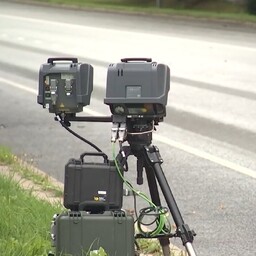2025. aasta alguses tõusid trahvimäärad. See andis riigile poole aastaga 2,8 miljonit eurot rohkem raha.
2024. aasta esimesel poolel oli
keskmine trahv
264 eurot. Nüüd on
keskmine trahv
470 eurot. Trahviühiku hind kasvas kahelt eurolt neljale.
keskmine trahv
Tõlge fraasile: keskmine trahv
EN
average fine
keskmine trahv
Tõlge fraasile: keskmine trahv
EN
average fine
2024. aasta esimesel poolel oli 15 212 trahvi. Kokku olid trahvid 4 miljonit eurot. 2025. aasta samal ajal oli trahve 14 395. Nende trahvide summa oli 6,8 miljonit eurot.
Trahvide suurendamise eesmärk oli
vähendada liiklusrikkumisi
. Justiitsminister Kalle Laanet ütles, et suured trahvid peaksid inimesi hoidma rikkumistest.
vähendada liiklusrikkumisi
Tõlge fraasile: vähendada liiklusrikkumisi
EN
reduce traffic violations
Kuid
liiklusrikkumiste arv
on kasvanud. 2024. aasta esimesel poolel oli 43 782 rikkumist. 2025. aasta esimesel poolel oli 46 659 rikkumist.
liiklusrikkumiste arv
Tõlge fraasile: liiklusrikkumiste arv
EN
number of traffic violations
Politsei töö on jälgida liiklust ja sekkuda rikkumistesse. Politsei liiklusjuht Taavi Kirss ütles, et
liikluskultuur
ei muutu kiiresti.
liikluskultuur
Tõlge fraasile: liikluskultuur
EN
traffic culture
Politsei proovib lahendada olukordi rahumeelselt. Näiteks kasutavad nad
rahunemispeatus
i. Kuid see ei ole alati võimalik.
rahunemispeatus
Tõlge fraasile: rahunemispeatus
EN
calming stop
Joobes juhtimisi on vähem kui varem. Kiiruse ületamist on aga rohkem.
At the beginning of 2025, fine rates increased. This gave the state 2.8 million euros more in half a year.
In the first half of 2024, the average fine was 264 euros. Now the average fine is 470 euros. The cost of a fine unit increased from two euros to four.
In the first half of 2024, there were 15,212 fines. The total amount of fines was 4 million euros. In the same period in 2025, there were 14,395 fines. The total amount of these fines was 6.8 million euros.
The goal of increasing fines was to reduce traffic violations. Justice Minister Kalle Laanet said that high fines should deter people from violating the rules.
However, the number of traffic violations has increased. In the first half of 2024, there were 43,782 violations. In the first half of 2025, there were 46,659 violations.
The police's job is to monitor traffic and intervene in violations. Police Traffic Chief Taavi Kirss said that traffic culture does not change quickly.
The police try to resolve situations peacefully. For example, they use calming stops. However, this is not always possible.
Drunk driving cases are fewer than before. However, there are more cases of speeding.

